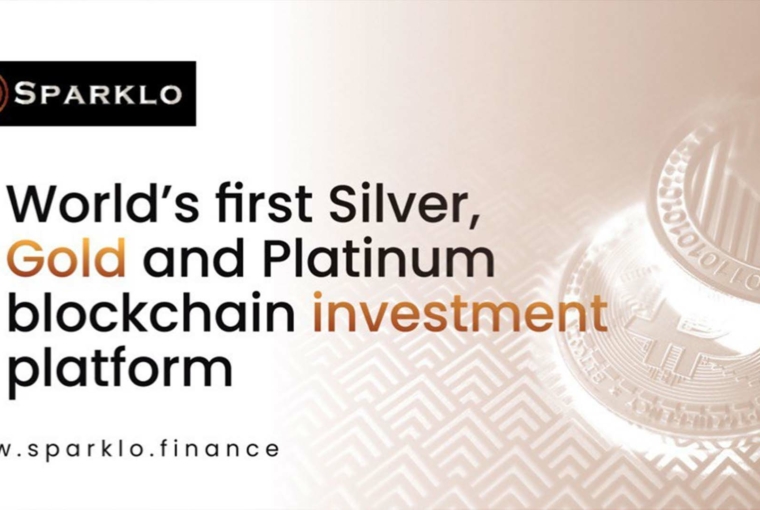Chainlink has recently surged in value, with LINK/USDT climbing from $13 to $17 on Gate.io, drawing attention to the factors fueling this notable increase. This analysis delves into the technical aspects supporting Chainlink’s bullish outlook, such as key resistance levels, Fibonacci retracements, and the Ichimoku cloud indicators.
By examining these technical indicators, alongside the broader market environment influenced by Bitcoin’s performance, we can gain a clearer picture of Chainlink’s potential trajectory. Additionally, the increasing on-chain activity, marked by a rise in daily active addresses, underscores the growing network usage and engagement that have propelled LINK’s price upward. This introduction sets the stage for a detailed exploration of Chainlink’s recent performance and its prospects in the evolving cryptocurrency landscape.
Understanding Chainlink
Chainlink is an oracle network that enables smart contracts on blockchain to securely interact with external data sources like sensors, APIs, and payment systems. It was created to solve the issue of connecting blockchain-based smart contracts with real-world data, which is essential for the functionality of many decentralized applications (dApps).
At its core, Chainlink provides reliable tamper-proof inputs and outputs for complex smart contracts on any blockchain. It achieves this through a decentralized network of nodes, which fetch and validate external data before delivering it to the smart contract. This ensures that the data used in smart contracts is accurate, secure, and free from manipulation.
Chainlink’s native token, LINK, is used to pay node operators for retrieving data, converting it into a blockchain-readable format, off-chain computation, and uptime guarantees. The token incentivizes participants to provide accurate data and reliable services, which is critical for the network’s overall reliability and security.
Chainlink’s Bullish Prospects Supported by Key Levels
On the daily chart, Chainlink has approached the upper boundary of the Ichimoku cloud, currently around $17.41, indicating a strong resistance level. A successful breach above this boundary could signal further bullish momentum.
Chainlink has retraced to crucial Fibonacci levels, with strong support noted at $16.41 (0.236), $15.525 (0.382), and $14.09 (0.618). Maintaining support above these levels, particularly at $15.525, will sustain the bullish outlook.
Moreover, the LINK/BTC pair on the daily chart has recently entered the Ichimoku cloud, indicating a potential upward trend. Entry into the cloud often precedes price increases, suggesting LINK could continue to gain against Bitcoin.
On the 4-hour chart, LINK is trading above the Ichimoku cloud against Bitcoin and is currently testing its upper boundary. Maintaining this position supports the bullish outlook, while failing to do so and breaking downward could shift market sentiment.
The bullish scenario is bolstered by Bitcoin’s potential rise to $73,000. If Bitcoin continues its upward trend, LINK could potentially reach $19 in the mid-term. Overall, technical indicators and key support/resistance levels suggest a strong bullish potential for Chainlink, provided it holds above critical levels and leverages Bitcoin’s upward momentum.
Increased On-Chain Activity Boosts Chainlink’s Price
The recent surge in on-chain activity for Chainlink has propelled its price from $13 to $17. This increase in activity is reflected in the sharp rise in daily active addresses, as illustrated in the accompanying chart.
Bitcoin’s concurrent rise to $72,000 has created a favorable macro environment for Chainlink’s price increase. The broader cryptocurrency market’s bullish momentum, led by Bitcoin, has likely contributed to the positive price action observed in Chainlink.
Key levels to monitor include $16.41 (the upper boundary of the Ichimoku cloud), $15.52 (the 0.382 Fibonacci level), and $14.09 (the 0.618 Fibonacci level). These indicators can assist in optimizing your trading strategy. While LINK shows strong potential, it is wise to diversify your portfolio with other high-potential assets to mitigate risk.
Chainlink’s Competition
Chainlink operates in a rapidly growing field of decentralized oracles, and several competitors are vying for dominance in this space. One notable competitor is Band Protocol, which also provides decentralized data oracles. Band Protocol focuses on cross-chain data compatibility and aims to deliver fast and cost-effective data solutions. Like Chainlink, Band Protocol incentivizes node operators to supply accurate data, leveraging its native token, BAND, for this purpose.
Another competitor is API3, which seeks to solve some of the limitations found in other oracle networks by introducing first-party oracles. Unlike third-party oracles used by Chainlink and others, first-party oracles allow data providers to operate their own nodes, ensuring data integrity and reducing the risk of manipulation. API3’s unique approach aims to provide highly secure and transparent data feeds directly from the source.
Tellor is another player in the decentralized oracle market. It focuses on providing reliable data for DeFi applications by utilizing a system where data reporters compete to provide the most accurate information. Tellor’s approach emphasizes decentralization and security, leveraging its native token, TRB, to incentivize data reporting and ensure data accuracy.
Lastly, DIA (Decentralized Information Asset) is a notable competitor, offering a transparent, community-verified oracle platform. DIA leverages its open-source framework to provide verified data feeds for various DeFi applications. By allowing community participation in data validation, DIA aims to enhance the accuracy and reliability of its data oracles.
Each of these competitors brings unique strengths and innovations to the decentralized oracle space, posing challenges to Chainlink’s dominance. As the demand for reliable and secure data oracles grows, the competition among these providers is likely to drive further advancements and improvements in the technology and services offered.


